Top 30 books recommended on Hacker News
This is a collection of the top 30 books ranked by total number of links to Amazon in Hacker News comments.
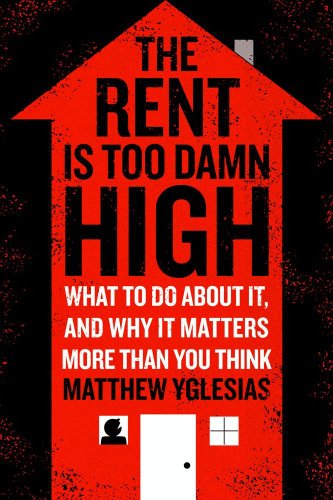
Show on Amazon.com
The Rent Is Too Damn High: What To Do About It, And Why It Matters More Than You Think
Author:Publisher: Simon & Schuster
Number of links: 53
Rent is an issue that affects nearly everyone. High rent is a problem for all of us, extending beyond personal financial strain. High rent drags on our country's overall rate of economic growth, damages the environment, and promotes long commutes, traffic jams, misery, and smog. Yet instead of a serious focus on the issue, America's cities feature niche conversations about the availability of “affordable housing” for poor people. Yglesias's book changes the conversation for the first time, presenting newfound context for the issue and real-time, practical solutions for the problem.
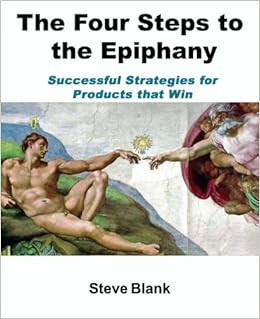
Show on Amazon.com
The Four Steps to the Epiphany: Successful Strategies for Products that Win
Author:Publisher: Cafepress.com
Number of links: 45
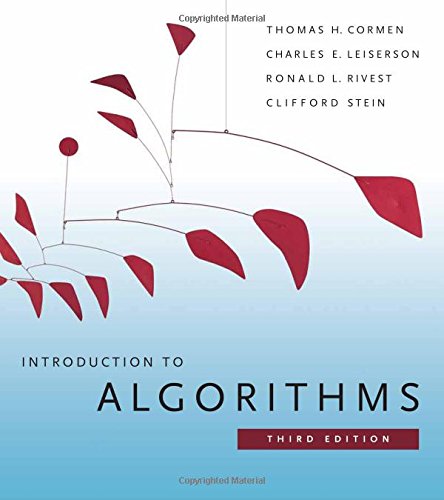
Show on Amazon.com
Introduction to Algorithms, 3rd Edition
Author:Publisher: The MIT Press
Number of links: 40
Some books on algorithms are rigorous but incomplete; others cover masses of material but lack rigor. Introduction to Algorithms uniquely combines rigor and comprehensiveness. The book covers a broad range of algorithms in depth, yet makes their design and analysis accessible to all levels of readers. Each chapter is relatively self-contained and can be used as a unit of study. The algorithms are described in English and in a pseudocode designed to be readable by anyone who has done a little programming. The explanations have been kept elementary without sacrificing depth of coverage or mathematical rigor.
The first edition became a widely used text in universities worldwide as well as the standard reference for professionals. The second edition featured new chapters on the role of algorithms, probabilistic analysis and randomized algorithms, and linear programming. The third edition has been revised and updated throughout. It includes two completely new chapters, on van Emde Boas trees and multithreaded algorithms, substantial additions to the chapter on recurrence (now called "Divide-and-Conquer"), and an appendix on matrices. It features improved treatment of dynamic programming and greedy algorithms and a new notion of edge-based flow in the material on flow networks. Many new exercises and problems have been added for this edition. As of the third edition, this textbook is published exclusively by the MIT Press.

Show on Amazon.com
Influence: The Psychology of Persuasion, Revised Edition
Author:Publisher: Harper Business
Number of links: 32
Influence, the classic book on persuasion, explains the psychology of why people say "yes"—and how to apply these understandings. Dr. Robert Cialdini is the seminal expert in the rapidly expanding field of influence and persuasion. His thirty-five years of rigorous, evidence-based research along with a three-year program of study on what moves people to change behavior has resulted in this highly acclaimed book.
You'll learn the six universal principles, how to use them to become a skilled persuader—and how to defend yourself against them. Perfect for people in all walks of life, the principles of Influence will move you toward profound personal change and act as a driving force for your success.
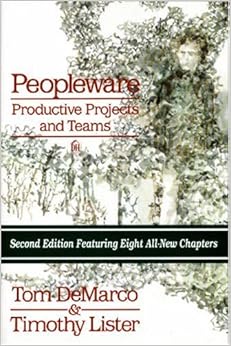
Show on Amazon.com
Peopleware: Productive Projects and Teams (Second Edition)
Author:Publisher: Dorset House Publishing Company, Incorporated
Number of links: 31

Show on Amazon.com
Code: The Hidden Language of Computer Hardware and Software
Author:Publisher: Microsoft Press
Number of links: 30
What do flashlights, the British invasion, black cats, and seesaws have to do with computers? In CODE, they show us the ingenious ways we manipulate language and invent new means of communicating with each other. And through CODE, we see how this ingenuity and our very human compulsion to communicate have driven the technological innovations of the past two centuries.
Using everyday objects and familiar language systems such as Braille and Morse code, author Charles Petzold weaves an illuminating narrative for anyone who's ever wondered about the secret inner life of computers and other smart machines.
It's a cleverly illustrated and eminently comprehensible story—and along the way, you'll discover you've gained a real context for understanding today's world of PCs, digital media, and the Internet. No matter what your level of technical savvy, CODE will charm you—and perhaps even awaken the technophile within.

Show on Amazon.com
Working Effectively with Legacy Code
Author:Publisher: Prentice Hall
Number of links: 26
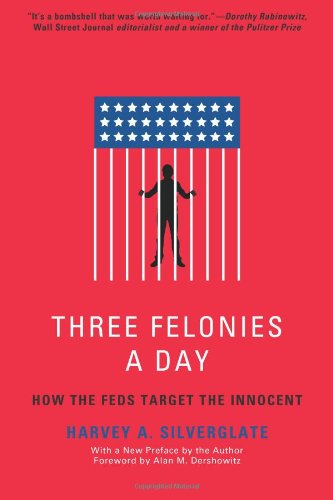
Show on Amazon.com
Three Felonies A Day: How the Feds Target the Innocent
Author:Publisher: Encounter Books
Number of links: 26

Show on Amazon.com
JavaScript: The Good Parts
Author:Publisher: O'Reilly Media
Number of links: 25
Most programming languages contain good and bad parts, but JavaScript has more than its share of the bad, having been developed and released in a hurry before it could be refined. This authoritative book scrapes away these bad features to reveal a subset of JavaScript that's more reliable, readable, and maintainable than the language as a whole—a subset you can use to create truly extensible and efficient code.
Considered the JavaScript expert by many people in the development community, author Douglas Crockford identifies the abundance of good ideas that make JavaScript an outstanding object-oriented programming language-ideas such as functions, loose typing, dynamic objects, and an expressive object literal notation. Unfortunately, these good ideas are mixed in with bad and downright awful ideas, like a programming model based on global variables.
When Java applets failed, JavaScript became the language of the Web by default, making its popularity almost completely independent of its qualities as a programming language. In JavaScript: The Good Parts, Crockford finally digs through the steaming pile of good intentions and blunders to give you a detailed look at all the genuinely elegant parts of JavaScript, including:
- Syntax
- Objects
- Functions
- Inheritance
- Arrays
- Regular expressions
- Methods
- Style
- Beautiful features
The real beauty? As you move ahead with the subset of JavaScript that this book presents, you'll also sidestep the need to unlearn all the bad parts. Of course, if you want to find out more about the bad parts and how to use them badly, simply consult any other JavaScript book.
With JavaScript: The Good Parts, you'll discover a beautiful, elegant, lightweight and highly expressive language that lets you create effective code, whether you're managing object libraries or just trying to get Ajax to run fast. If you develop sites or applications for the Web, this book is an absolute must.

Show on Amazon.com
The Little Schemer - 4th Edition
Author:Publisher: The MIT Press
Number of links: 23
The notion that "thinking about computing is one of the most exciting things the human mind can do" sets both The Little Schemer (formerly known as The Little LISPer) and its new companion volume, The Seasoned Schemer, apart from other books on LISP. The authors' enthusiasm for their subject is compelling as they present abstract concepts in a humorous and easy-to-grasp fashion. Together, these books will open new doors of thought to anyone who wants to find out what computing is really about. The Little Schemer introduces computing as an extension of arithmetic and algebra; things that everyone studies in grade school and high school. It introduces programs as recursive functions and briefly discusses the limits of what computers can do. The authors use the programming language Scheme, and interesting foods to illustrate these abstract ideas. The Seasoned Schemer informs the reader about additional dimensions of computing: functions as values, change of state, and exceptional cases. The Little LISPer has been a popular introduction to LISP for many years. It had appeared in French and Japanese. The Little Schemer and The Seasoned Schemer are worthy successors and will prove equally popular as textbooks for Scheme courses as well as companion texts for any complete introductory course in Computer Science.

Show on Amazon.com
The E-Myth Revisited: Why Most Small Businesses Don't Work and What to Do About It
Author:Publisher: HarperCollins
Number of links: 23
In this first new and totally revised edition of the 150,000-copy underground bestseller, The E-Myth, Michael Gerber dispels the myths surrounding starting your own business and shows how commonplace assumptions can get in the way of running a business. He walks you through the steps in the life of a business from entrepreneurial infancy, through adolescent growing pains, to the mature entrepreneurial perspective, the guiding light of all businesses that succeed. He then shows how to apply the lessons of franchising to any business whether or not it is a franchise. Finally, Gerber draws the vital, often overlooked distinction between working on your business and working in your business. After you have read The E-Myth Revisited, you will truly be able to grow your business in a predictable and productive way.

Show on Amazon.com
Feeling Good: The New Mood Therapy
Author:Publisher: Harper
Number of links: 22
- Recognise what causes your mood swings
- Nip negative feelings in the bud
- Deal with guilt
- Handle hostility and criticism
- Overcome addiction to love and approval
- Build self-esteem
- Feel good everyday

Show on Amazon.com
Programming Collective Intelligence: Building Smart Web 2.0 Applications
Author:Publisher: O'Reilly Media
Number of links: 22
- Collaborative filtering techniques that enable online retailers to recommend products or media
- Methods of clustering to detect groups of similar items in a large dataset
- Search engine features--crawlers, indexers, query engines, and the PageRank algorithm
- Optimization algorithms that search millions of possible solutions to a problem and choose the best one
- Bayesian filtering, used in spam filters for classifying documents based on word types and other features
- Using decision trees not only to make predictions, but to model the way decisions are made
- Predicting numerical values rather than classifications to build price models
- Support vector machines to match people in online dating sites
- Non-negative matrix factorization to find the independent features in adataset
- Evolving intelligence for problem solving--how a computer develops its skill by improving its own code the more it plays a game
"Bravo! I cannot think of a better way for a developer to first learn these algorithms and methods, nor can I think of a better way for me (an old AI dog) to reinvigorate my knowledge of the details."
-- Dan Russell, Google
"Toby's book does a great job of breaking down the complex subject matter of machine-learning algorithms into practical, easy-to-understand examples that can be directly applied to analysis of social interaction across the Web today. If I had this book two years ago, it would have saved precious time going down some fruitless paths."
-- Tim Wolters, CTO, Collective Intellect
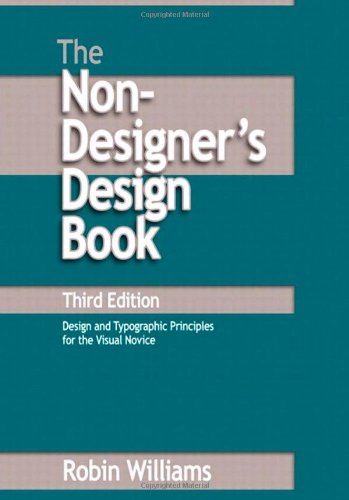
Show on Amazon.com
The Non-Designer's Design Book (3rd Edition)
Author:Publisher: Peachpit Press
Number of links: 21
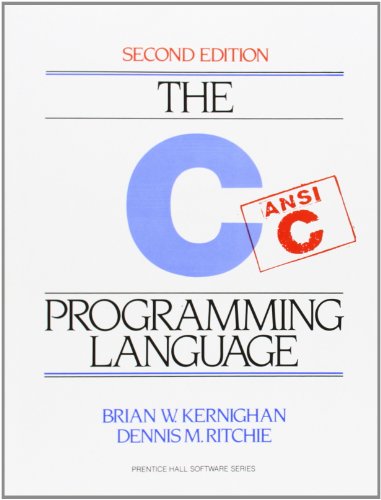
Show on Amazon.com
The C Programming Language
Author:Publisher: Prentice Hall
Number of links: 20
The authors present the complete guide to ANSI standard C language programming. Written by the developers of C, this new version helps readers keep up with the finalized ANSI standard for C while showing how to take advantage of C's rich set of operators, economy of expression, improved control flow, and data structures. The 2/E has been completely rewritten with additional examples and problem sets to clarify the implementation of difficult language constructs. For years, C programmers have let K&R guide them to building well-structured and efficient programs. Now this same help is available to those working with ANSI compilers. Includes detailed coverage of the C language plus the official C language reference manual for at-a-glance help with syntax notation, declarations, ANSI changes, scope rules, and the list goes on and on.
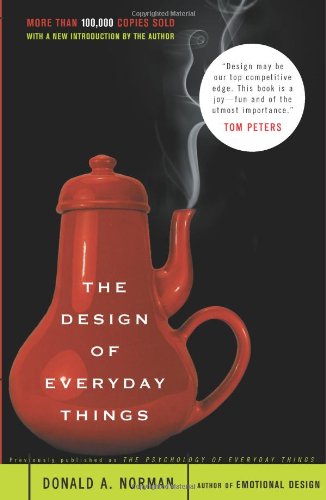
Show on Amazon.com
The Design of Everyday Things
Author:Publisher: Basic Books
Number of links: 20
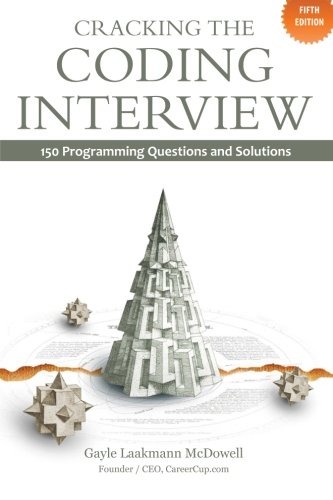
Show on Amazon.com
Cracking the Coding Interview: 150 Programming Questions and Solutions
Author:Publisher: CareerCup
Number of links: 20
The Interview Process
- Arrays and Strings
- Linked Lists
- Stacks and Queues
- Trees and Graphs
- Bit Manipulation
- Brain Teasers
- Mathematics and Probability
- Object-Oriented Design
- Recursion and Dynamic Programming
- Sorting and Searching
- Scalability and Memory Limits
- Testing
- C and C++
- Java
- Databases
- Threads and Locks

Show on Amazon.com
What Intelligence Tests Miss: The Psychology of Rational Thought
Author:Publisher: Yale University Press
Number of links: 19
Critics of intelligence tests—writers such as Robert Sternberg, Howard Gardner, and Daniel Goleman—have argued in recent years that these tests neglect important qualities such as emotion, empathy, and interpersonal skills. However, such critiques imply that though intelligence tests may miss certain key noncognitive areas, they encompass most of what is important in the cognitive domain. In this book, Keith E. Stanovich challenges this widely held assumption.
Stanovich shows that IQ tests (or their proxies, such as the SAT) are radically incomplete as measures of cognitive functioning. They fail to assess traits that most people associate with “good thinking,” skills such as judgment and decision making. Such cognitive skills are crucial to real-world behavior, affecting the way we plan, evaluate critical evidence, judge risks and probabilities, and make effective decisions. IQ tests fail to assess these skills of rational thought, even though they are measurable cognitive processes. Rational thought is just as important as intelligence, Stanovich argues, and it should be valued as highly as the abilities currently measured on intelligence tests.

Show on Amazon.com
On Writing Well, 30th Anniversary Edition: The Classic Guide to Writing Nonfiction
Author:Publisher: Harper Perennial
Number of links: 19
On Writing Well has been praised for its sound advice, its clarity and the warmth of its style. It is a book for everybody who wants to learn how to write or who needs to do some writing to get through the day, as almost everybody does in the age of e-mail and the Internet.
Whether you want to write about people or places, science and technology, business, sports, the arts or about yourself in the increasingly popular memoir genre, On Writing Well offers you fundamental priciples as well as the insights of a distinguished writer and teacher. With more than a million copies sold, this volume has stood the test of time and remains a valuable resource for writers and would-be writers.
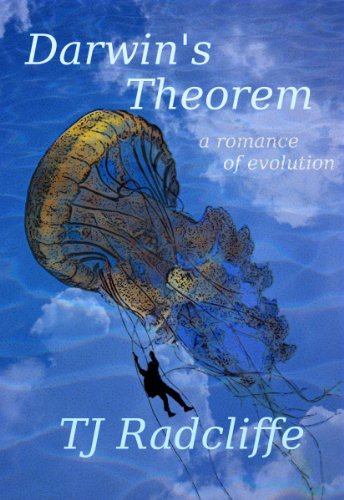
Show on Amazon.com
Darwin's Theorem
Author:Publisher: Siduri Press
Number of links: 19
Set in the New American Empire of the near future, Darwin's Theorem tells the story of Jay Calvin, a defrocked mathematical biologist who has a last chance at redemption when the mentor he once betrayed is killed. The dead man's daughter--and Jay's former lover--asks him for help in investigating her father's death, and recovering a missing manuscript that some want suppressed forever, and others want to use to shape the future of the human race...
It's a complicated book, and as such, it's got something for everyone to hate:
- Atheists will hate it because it talks so much about god and religion, and takes the idea of god and religion being important in people's lives seriously.
- Bible-believing Christians will hate it because it insults scripture. And Bible-believing Christians.
- Christians will hate it because it's plotted around a very loose re-imagining of Hyam Maccoby's heterodox interpretation of early Christianity.
- Muslims will hate it because the sole Muslim character is a Sufi.
- Catholics will hate it because it makes jokes about the Pope.
- Australians will hate it because it makes jokes about Australia.
- Scientists will hate it because it depicts scientists as religious.
- Liberals will hate it because it simplifies or just sweeps away complex social issues for the sake of story.
- Biologists will hate it because it plays fast-and-loose with Darwin, and pretty much everyone else.
- Conservatives will hate it because it depicts their leaders as anti-intellectual conformist thugs.
- Physicists will hate it because it isn't about physics.
- Historians of science will hate because it does for the history of science what Dan Brown does for the history of Christianity.
- Casual readers will hate it because they'll sense the presence of metafictional ironies.
- Science fiction readers will hate it because it contains too much romance.
- Romance readers will hate it because it contains too much science.
- Post-modernists will hate it because they'll miss the metafictional ironies.
- Literary critics will hate it because it is a book.
- People who haven't read Dhalgren will hate it because they'll miss the point.
- People who have read Dhalgren… wait, there aren't any of those.
- Fans of Diversity Age SF will hate it because the protagonist is a straight, white, able-bodied, educated, Anglo male.
- Philosophers will hate it because the plot keeps interrupting the philosophical dialogs.
- Fans of Golden Age SF will hate it because it doesn't involve spaceships or ray-guns.
- Americans will hate it because it's critical of American imperialism.
- Mystery readers will hate it because the philosophical dialogs keep interrupting the plot.
- Rednecks will hate it because it portrays foreigners sympathetically.
- Canadians will hate it because it was written by a Canadian. It's even written in Canadian English, or a reasonable facsimile thereof.
There are many other reasons to hate it. Why not buy the book and find out what yours is?
The book is an even better deal than it looks, because it really needs to be read twice: once as fiction, once as metafiction. Dhalgren is a circle. Darwin's Theorem is a Moebius strip: it requires two complete traversals to take you back to the beginning, to know the place for the first time.
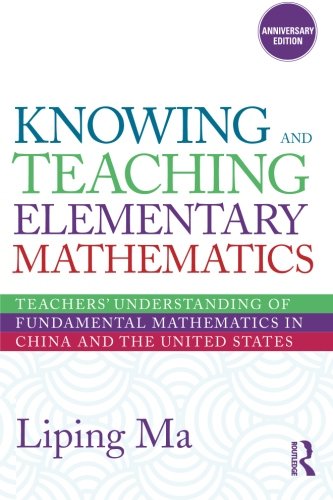
Show on Amazon.com
Knowing and Teaching Elementary Mathematics: Teachers' Understanding of Fundamental Mathematics in China and the United States (Studies in Mathematical Thinking and Learning Series)
Author:Publisher: Routledge
Number of links: 19
Studies of teachers in the U.S. often document insufficient subject matter knowledge in mathematics. Yet, these studies give few examples of the knowledge teachers need to support teaching, particularly the kind of teaching demanded by recent reforms in mathematics education. Knowing and Teaching Elementary Mathematics describes the nature and development of the knowledge that elementary teachers need to become accomplished mathematics teachers, and suggests why such knowledge seems more common in China than in the United States, despite the fact that Chinese teachers have less formal education than their U.S. counterparts.
The anniversary edition of this bestselling volume includes the original studies that compare U.S and Chinese elementary school teachers' mathematical understanding and offers a powerful framework for grasping the mathematical content necessary to understand and develop the thinking of school children. Highlighting notable changes in the field and the author's work, this new edition includes an updated preface, introduction, and key journal articles that frame and contextualize this seminal work.
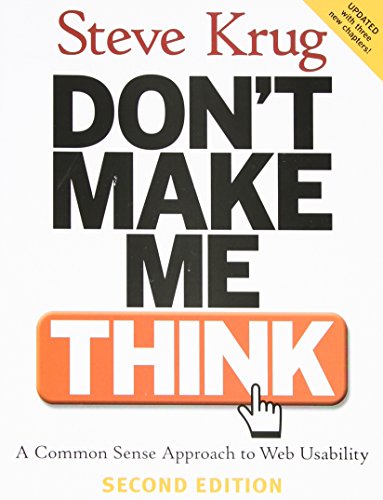
Show on Amazon.com
Don't Make Me Think: A Common Sense Approach to Web Usability, 2nd Edition
Author:Publisher: New Riders
Number of links: 18
- Usability as common courtesy -- Why people really leave Web sites
- Web Accessibility, CSS, and you -- Making sites usable and accessible
- Help! My boss wants me to ______. -- Surviving executive design whims
In this second edition, Steve Krug adds essential ammunition for those whose bosses, clients, stakeholders, and marketing managers insist on doing the wrong thing. If you design, write, program, own, or manage Web sites, you must read this book." -- Jeffrey Zeldman, author of Designing with Web Standards

Show on Amazon.com
Expert C Programming: Deep C Secrets
Author:Publisher: Prentice Hall
Number of links: 17
This book is for the knowledgeable C programmer, this is a second book that gives the C programmers advanced tips and tricks. This book will help the C programmer reach new heights as a professional. Organized to make it easy for the reader to scan to sections that are relevant to their immediate needs.

Show on Amazon.com
Clean Code: A Handbook of Agile Software Craftsmanship
Author:Publisher: Prentice Hall
Number of links: 16
Noted software expert Robert C. Martin presents a revolutionary paradigm with Clean Code: A Handbook of Agile Software Craftsmanship . Martin has teamed up with his colleagues from Object Mentor to distill their best agile practice of cleaning code “on the fly” into a book that will instill within you the values of a software craftsman and make you a better programmer—but only if you work at it.
What kind of work will you be doing? You'll be reading code—lots of code. And you will be challenged to think about what's right about that code, and what's wrong with it. More importantly, you will be challenged to reassess your professional values and your commitment to your craft.
Clean Code is divided into three parts. The first describes the principles, patterns, and practices of writing clean code. The second part consists of several case studies of increasing complexity. Each case study is an exercise in cleaning up code—of transforming a code base that has some problems into one that is sound and efficient. The third part is the payoff: a single chapter containing a list of heuristics and “smells” gathered while creating the case studies. The result is a knowledge base that describes the way we think when we write, read, and clean code.
Readers will come away from this book understanding
- How to tell the difference between good and bad code
- How to write good code and how to transform bad code into good code
- How to create good names, good functions, good objects, and good classes
- How to format code for maximum readability
- How to implement complete error handling without obscuring code logic
- How to unit test and practice test-driven development
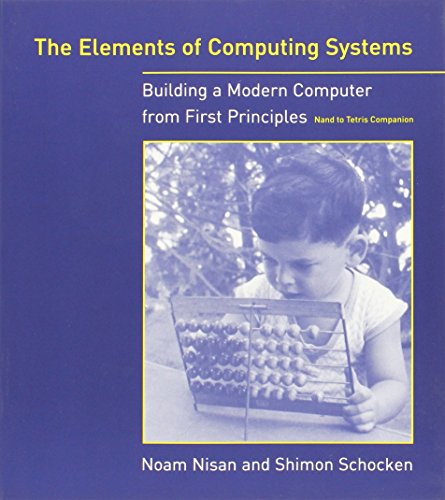
Show on Amazon.com
The Elements of Computing Systems: Building a Modern Computer from First Principles
Author:Publisher: The MIT Press
Number of links: 16
In the early days of computer science, the interactions of hardware, software, compilers, and operating system were simple enough to allow students to see an overall picture of how computers worked. With the increasing complexity of computer technology and the resulting specialization of knowledge, such clarity is often lost. Unlike other texts that cover only one aspect of the field, The Elements of Computing Systems gives students an integrated and rigorous picture of applied computer science, as its comes to play in the construction of a simple yet powerful computer system.
Indeed, the best way to understand how computers work is to build one from scratch, and this textbook leads students through twelve chapters and projects that gradually build a basic hardware platform and a modern software hierarchy from the ground up. In the process, the students gain hands-on knowledge of hardware architecture, operating systems, programming languages, compilers, data structures, algorithms, and software engineering. Using this constructive approach, the book exposes a significant body of computer science knowledge and demonstrates how theoretical and applied techniques taught in other courses fit into the overall picture.
Designed to support one- or two-semester courses, the book is based on an abstraction-implementation paradigm; each chapter presents a key hardware or software abstraction, a proposed implementation that makes it concrete, and an actual project. The emerging computer system can be built by following the chapters, although this is only one option, since the projects are self-contained and can be done or skipped in any order. All the computer science knowledge necessary for completing the projects is embedded in the book, the only pre-requisite being a programming experience.The book's web site provides all tools and materials necessary to build all the hardware and software systems described in the text, including two hundred test programs for the twelve projects. The projects and systems can be modified to meet various teaching needs, and all the supplied software is open-source.

Show on Amazon.com
Code Complete: A Practical Handbook of Software Construction, Second Edition
Author:Publisher: Microsoft Press
Number of links: 16
Widely considered one of the best practical guides to programming, Steve McConnell's original CODE COMPLETE has been helping developers write better software for more than a decade. Now this classic book has been fully updated and revised with leading-edge practices—and hundreds of new code samples—illustrating the art and science of software construction. Capturing the body of knowledge available from research, academia, and everyday commercial practice, McConnell synthesizes the most effective techniques and must-know principles into clear, pragmatic guidance. No matter what your experience level, development environment, or project size, this book will inform and stimulate your thinking—and help you build the highest quality code.
Discover the timeless techniques and strategies that help you:
- Design for minimum complexity and maximum creativity
- Reap the benefits of collaborative development
- Apply defensive programming techniques to reduce and flush out errors
- Exploit opportunities to refactor—or evolve—code, and do it safely
- Use construction practices that are right-weight for your project
- Debug problems quickly and effectively
- Resolve critical construction issues early and correctly
- Build quality into the beginning, middle, and end of your project
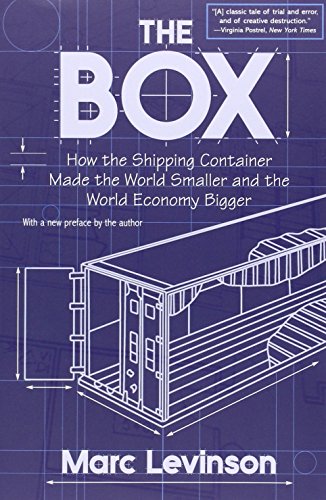
Show on Amazon.com
The Box: How the Shipping Container Made the World Smaller and the World Economy Bigger
Author:Publisher: Princeton University Press
Number of links: 16
In April 1956, a refitted oil tanker carried fifty-eight shipping containers from Newark to Houston. From that modest beginning, container shipping developed into a huge industry that made the boom in global trade possible. The Box tells the dramatic story of the container's creation, the decade of struggle before it was widely adopted, and the sweeping economic consequences of the sharp fall in transportation costs that containerization brought about.
Published on the fiftieth anniversary of the first container voyage, this is the first comprehensive history of the shipping container. It recounts how the drive and imagination of an iconoclastic entrepreneur, Malcom McLean, turned containerization from an impractical idea into a massive industry that slashed the cost of transporting goods around the world and made the boom in global trade possible.
But the container didn't just happen. Its adoption required huge sums of money, both from private investors and from ports that aspired to be on the leading edge of a new technology. It required years of high-stakes bargaining with two of the titans of organized labor, Harry Bridges and Teddy Gleason, as well as delicate negotiations on standards that made it possible for almost any container to travel on any truck or train or ship. Ultimately, it took McLean's success in supplying U.S. forces in Vietnam to persuade the world of the container's potential.
Drawing on previously neglected sources, economist Marc Levinson shows how the container transformed economic geography, devastating traditional ports such as New York and London and fueling the growth of previously obscure ones, such as Oakland. By making shipping so cheap that industry could locate factories far from its customers, the container paved the way for Asia to become the world's workshop and brought consumers a previously unimaginable variety of low-cost products from around the globe.
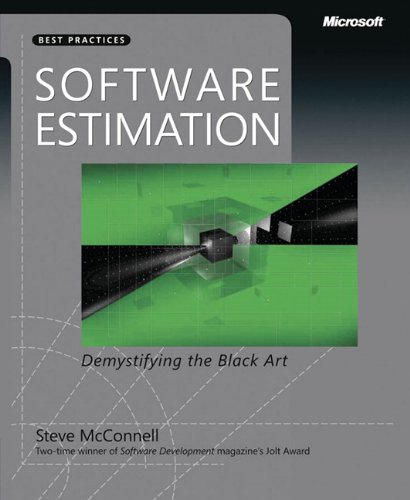
Show on Amazon.com
Software Estimation: Demystifying the Black Art (Developer Best Practices)
Author:Publisher: Microsoft Press
Number of links: 16
Often referred to as the “black art” because of its complexity and uncertainty, software estimation is not as difficult or puzzling as people think. In fact, generating accurate estimates is straightforward—once you understand the art of creating them. In his highly anticipated book, acclaimed author Steve McConnell unravels the mystery to successful software estimation—distilling academic information and real-world experience into a practical guide for working software professionals. Instead of arcane treatises and rigid modeling techniques, this guide highlights a proven set of procedures, understandable formulas, and heuristics that individuals and development teams can apply to their projects to help achieve estimation proficiency.
Discover how to:
- Estimate schedule and cost—or estimate the functionality that can be delivered within a given time frame
- Avoid common software estimation mistakes
- Learn estimation techniques for you, your team, and your organization * Estimate specific project activities—including development, management, and defect correction
- Apply estimation approaches to any type of project—small or large, agile or traditional
- Navigate the shark-infested political waters that surround project estimates
When many corporate software projects are failing, McConnell shows you what works for successful software estimation.
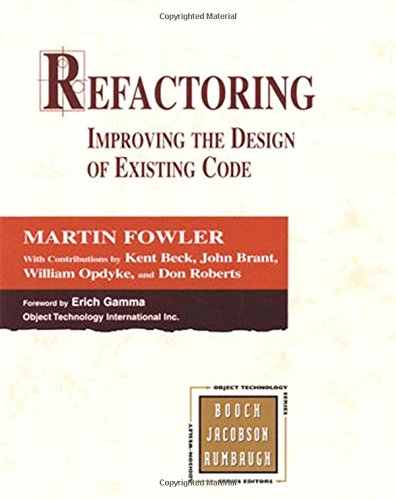
Show on Amazon.com
Refactoring: Improving the Design of Existing Code
Author:Publisher: Addison-Wesley Professional
Number of links: 16
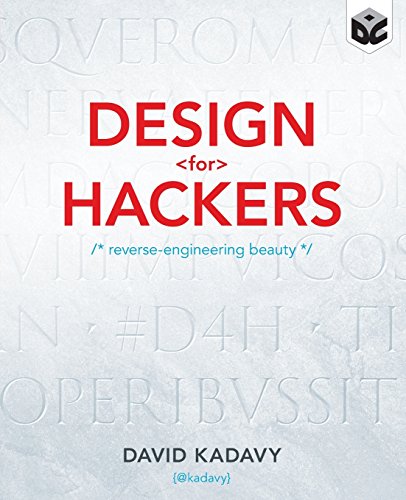
Show on Amazon.com
Design for Hackers: Reverse Engineering Beauty
Author:Publisher: Wiley
Number of links: 15
Hackers are able to accomplish so much in so little time because they come from a community that's built upon sharing knowledge. When it comes to programming, they can learn whatever they need to learn by reading manuals, or simply typing in a Google search. But learning design isn't so simple.
Many design books try to teach design through lists of "do's" and "don'ts." But hackers know you need a deeper understanding of something to really do it well. Design for Hackers takes apart design by "reverse-engineering" Impressionist painting, Renaissance sculpture, the Mac OS X Aqua interface, Twitter's web interface, and much more. You'll learn about color theory, typography, proportions, and design principles. This theoretical advice is mixed with concrete, actionable advice such as suggestions for color scheme tools, and a chart of "all of the fonts you'll ever need" (available along with the free design course at designforhackers.com).
By the end of the book, you'll be seeing design through new eyes.
